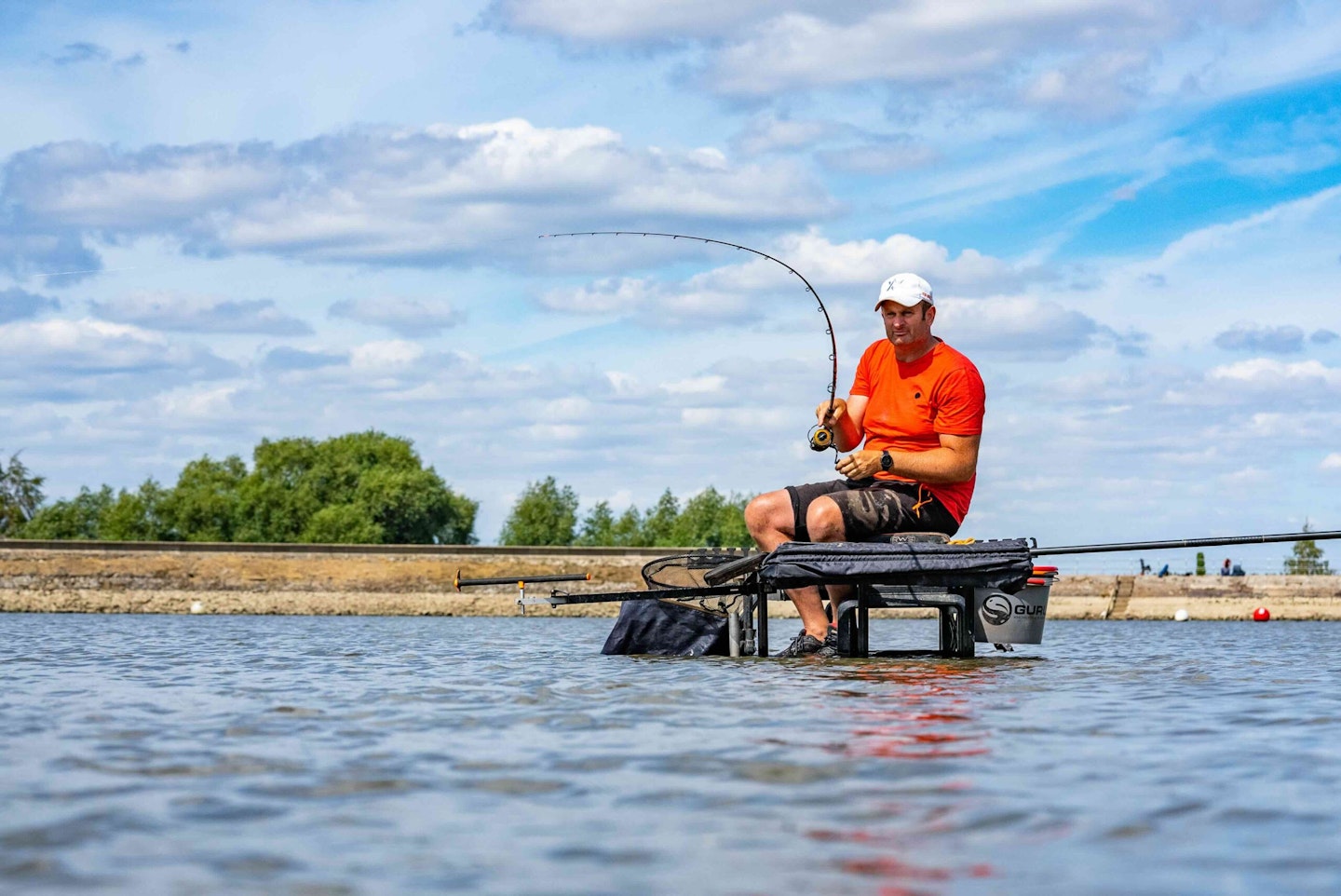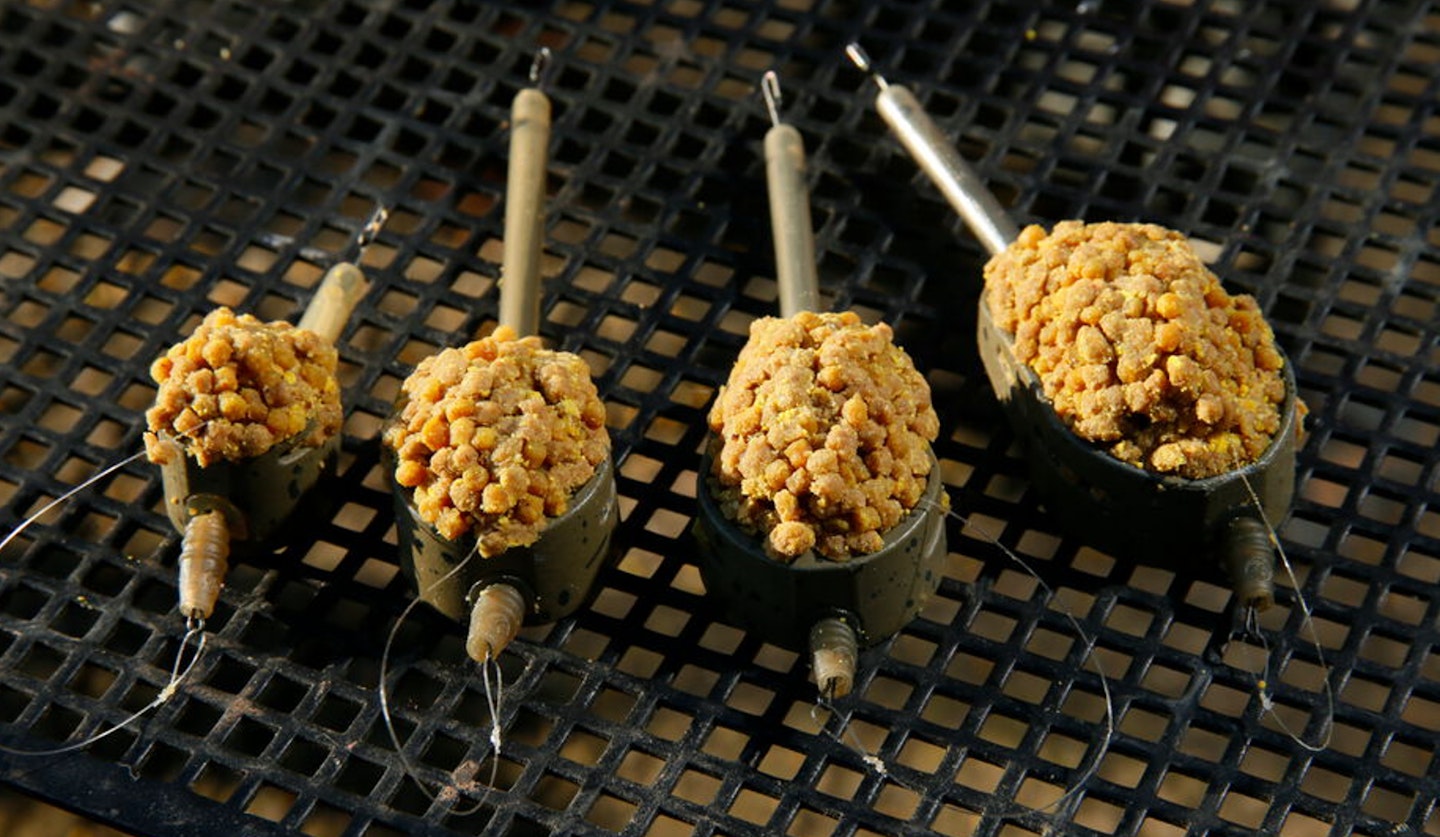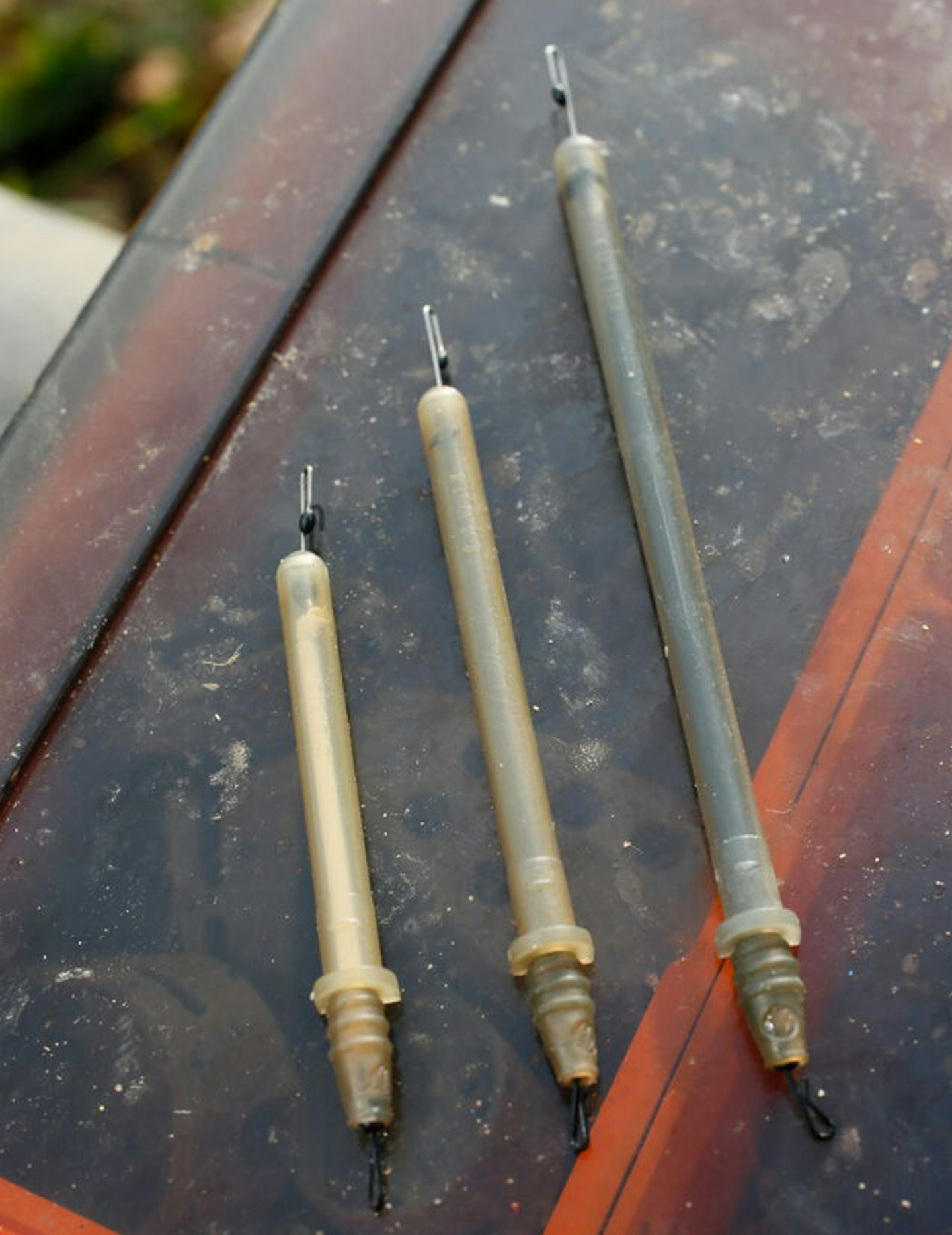Fish the method feeder on commercial stillwaters today and you basically have a choice between an elasticated or an inline pattern. They differ in the way the feeder is connected to the mainline.
Elasticated versions see the hooklength and mainline attached at either end of a piece of strong elastic running through the middle of the feeder, while an inline allows the feeder to run along the mainline, stopped by a quick-change bead in the base.
Feeder choice won’t affect how many fish you hook, or how well you see bites, but it may prevent fish losses. When a fish is close to the net it will be thrashing about and the hook can easily pull without the shock-absorbing qualities of elastic. That’s why, if possible, I always use elasticated feeders.
Some fisheries, though, still don’t allow you to use an elasticated feeder, leaving you with just the one option. If you have to use an inline feeder, you just need to be a little more careful when it comes to netting fish! Give it a go...
THE BEST CARP FEEDER RODSARE THE PERFECT TOOL FOR FISHING AN ELASTICATED FEEDER.

Beat hook-pulls
If a carp shakes its head under the rod-tip, the chances of a hook-pull are greatly reduced when using an elasticated feeder. This means more fish in your net, particularly useful in match situations or if you are a beginner and learning to play fish.
ALWAYS SELECT THE RIGHT FEEDER ROD FOR THE JOB WITH OUR EXPERT GUIDE.

Make quick changes
With an elasticated X-Safe feeder I can quickly change the whole rig – feeder, bait and all. With an inline feeder this would be much slower. It also means you can have multiple feeders rigged up and baited ready to be cast out, and although this might seem extreme, it can mean you are in the water a lot longer which should mean more bites.
OUR GUIDE TO BEST HYBRID STYLE FEEDERS WILL HELP YOU CHOOSE THE RIGHT ONE FOR YOU.

Inline alternative
Elasticated feeders not allowed? A soft-actioned rod will absorb lunges from fish that would normally be soaked up by the elastic. Just remember to take your time when playing fish, there is no point rushing as it doesn't matter how big the fish is if you don't get it into your landing net!
FIND THE BEST ROD FOR FEEDER FISHING BY CHECKING OUT OUR LATEST BUYER'S GUIDES.

Change your stems
Feeder stems aid stability when casting. For long chucks, I use the longest stem. To cast 20 yards to an island the shortest will do. By all means play around with what you are using as it isn't a one-size fits all, but you will find a longer stem is generally best for punching a feeder out at distance.
IF YOU USE ONE OF THE BEST FISHNG REELS, IT WILL AID YOU IN LANDING MORE FISH.

